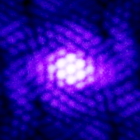|
Planetary Impacts
|
|
| Watsisname | Date: Friday, 08.03.2013, 17:58 | Message # 61 |
 Galaxy Architect
Group: Global Moderators
 United States
United States
Messages: 2613
Status: Offline
| Indeed, I would love to give this a more correct treatment but it's beyond my ability to do at the present. I think it does serve to show that the scenario is quite plausible, since the numbers were several orders of magnitude larger than I had expected them to be. 

|
| |
| |
| midtskogen | Date: Sunday, 10.03.2013, 13:05 | Message # 62 |
 Star Engineer
Group: Users
 Norway
Norway
Messages: 1674
Status: Offline
| Quote (SpaceEngineer) Some big fragments (100-1000 meters in diameter) may hit Earth, causing global catastrophe.
Most martian meteorites have spent millions of years in space. This is known from cosmic ray expsure ages. It would unlikely be an immediate threat. I think this also kills the comet winter scenario.
NIL DIFFICILE VOLENTI

Edited by midtskogen - Sunday, 10.03.2013, 14:09 |
| |
| |
| Watsisname | Date: Sunday, 10.03.2013, 14:47 | Message # 63 |
 Galaxy Architect
Group: Global Moderators
 United States
United States
Messages: 2613
Status: Offline
| Martian meteorites spend a long time in space because it statistically takes an extremely long time before one actually intersects the Earth -- impact probability per orbit is very, very low. If there is a huge influx of large debris, then it might not take very long before one hits Earth, but this of course depends on how much large debris actually crosses within Earth orbit. I have no idea what a reasonable figure would be for that.
Comet winter only requires many small particles come between the Earth and Sun, whereas impact requires the object/Earth actually intersect each other. There would also be many orders of magnitude more small particles than large ones.

Edited by Watsisname - Sunday, 10.03.2013, 14:48 |
| |
| |
| midtskogen | Date: Sunday, 10.03.2013, 16:00 | Message # 64 |
 Star Engineer
Group: Users
 Norway
Norway
Messages: 1674
Status: Offline
| The link I gave indicated that there is more than such statistics, since then you could assume that there is a pretty even distribution of ages (in space) among meteorites. But the text says "The almost total absence of meteorites with exposure ages of less than a million years suggests that meteoroid orbits cannot become Earth-crossing in much less than a million years". My understanding is that it applies for Mars meteorites as well.
NIL DIFFICILE VOLENTI

Edited by midtskogen - Sunday, 10.03.2013, 16:00 |
| |
| |
| Watsisname | Date: Sunday, 10.03.2013, 19:06 | Message # 65 |
 Galaxy Architect
Group: Global Moderators
 United States
United States
Messages: 2613
Status: Offline
| The meteoroids are generally thought to migrate from the asteroid belt due to influence from planets (the link notes resonances), which takes a while, whereas a large impact on Mars may spread debris more violently. I'm not very knowledgeable on this topic though; this is only my intuition.

|
| |
| |
| midtskogen | Date: Friday, 15.03.2013, 08:37 | Message # 66 |
 Star Engineer
Group: Users
 Norway
Norway
Messages: 1674
Status: Offline
| The reason why I revisited the question here was that I happened to discuss it with Hans Amundsen, who's leading the AMASE expeditions where they test equipment going to Mars, so his opinion would be interesting. The trouble apparently is that all Mars meteorites are old, and he pointed to the cosmic ray exposure ages. He didn't know why the orbits are like this.
Added (15.03.2013, 11:37)
---------------------------------------------
I tried the impact calculator again with the latest best estimates for the Chelyabinsk meteor:
Input:
Projectile diameter: 18.00 meters ( = 59.00 feet )
Projectile Density: 3600 kg/m3
Impact Velocity: 18.60 km per second ( = 11.60 miles per second )
Impact Angle: 21 degrees
Results:
The projectile begins to breakup at an altitude of 49500 meters = 162000 ft
The projectile bursts into a cloud of fragments at an altitude of 28900 meters = 94900 ft
The residual velocity of the projectile fragments after the burst is 14.1 km/s = 8.75 miles/s
The energy of the airburst is 8.09 x 1014 Joules = 0.19 x 100 MegaTons.
No crater is formed, although large fragments may strike the surface.
The air blast will arrive approximately 1.46 minutes after impact.
Peak Overpressure: 75.5 Pa = 0.000755 bars = 0.0107 psi
Max wind velocity: 0.178 m/s = 0.398 mph
Sound Intensity: 38 dB (Easily Heard)
This is not too bad. The altitude of maximum brightness has been estimated to 23300 meters. The sound intensity seems way off, though. It was pretty loud on the videos. But, of course, I suppose some of the best estimates might have been calculated using the same rules that the impact calculator uses, in reverse.
NIL DIFFICILE VOLENTI

Edited by midtskogen - Friday, 15.03.2013, 08:38 |
| |
| |
| Watsisname | Date: Friday, 15.03.2013, 14:24 | Message # 67 |
 Galaxy Architect
Group: Global Moderators
 United States
United States
Messages: 2613
Status: Offline
| Quote But, of course, I suppose some of the best estimates might have been calculated using the same rules that the impact calculator uses, in reverse.
I believe so. By observation we can determine entry angle, velocity, altitude and energy of the breakup(s), the intensity of the pressure wave, and from meteorites we can determine the type and density of the object. The initial size/mass can't be found directly, and is instead estimated by taking these data and going through the calculation in reverse.
The impact calculator seems to give too low of an energy for the airburst (too much KE lost before the burst; too large a fraction of KE remaining after, who knows?), and puts it at too high of an altitude, so the estimated pressure wave upon reaching ground is weaker than it was in reality. It was probably at least 1 psi to do that kind of damage.

Edited by Watsisname - Friday, 15.03.2013, 14:25 |
| |
| |
| midtskogen | Date: Friday, 15.03.2013, 15:30 | Message # 68 |
 Star Engineer
Group: Users
 Norway
Norway
Messages: 1674
Status: Offline
| Quote (Watsisname) The impact calculator seems to give too low of an energy for the airburst (too much KE lost before the burst; too large a fraction of KE remaining after, who knows?), and puts it at too high of an altitude, so the estimated pressure wave upon reaching ground is weaker than it was in reality. It was probably at least 1 psi to do that kind of damage.
I believe one fundamental problem is that the atmospheric entry doesn't result in a single explosion at a single point. When the meteor begins to break up, we get a chain reaction (the more fragmentation, the more air resistance), but how fast will it all happen?
It will be a stretched explosion and exactly how stretched is probably pretty unpredictable. It will depend on how the breakup starts and evolves. Even if most of the energy is released in one explosion and it all happens in less than a second, it will still translate into several km.
NIL DIFFICILE VOLENTI

|
| |
| |
| Watsisname | Date: Friday, 15.03.2013, 18:23 | Message # 69 |
 Galaxy Architect
Group: Global Moderators
 United States
United States
Messages: 2613
Status: Offline
| You are exactly right. The simulation treats breakup and airburst as one-time events that occur instantly; whereas the reality (and especially with Chelyabinsk) is far more complex.

|
| |
| |
| SpaceEngineer | Date: Saturday, 16.03.2013, 09:53 | Message # 70 |
 Author of Space Engine
Group: Administrators
 Russian Federation
Russian Federation
Messages: 4800
Status: Offline
| If you perform simple calculations, you'll found that "explosion" releases negligable amount of energy. The most energy of the shockwave is generated by hypersonic (55 Mach!) flight through the atmosphere.

|
| |
| |
| midtskogen | Date: Saturday, 16.03.2013, 13:18 | Message # 71 |
 Star Engineer
Group: Users
 Norway
Norway
Messages: 1674
Status: Offline
| Yes, but the "explosion" (better: rapid, explosion like break-up) does matter even for the shock wave. There a significant difference between one single 18 meter body travelling at 55 Mach and the same body broken up in 10,000 fragments also travelling at around 55 Mach, since the combined surface area of the fragments is much greater than of the original body.
This event also illustrates well how unlikely it is for a rocky meteor to survive in more or less one piece all the way to the ground. In this case the speed was fairly low (< 20 km/s) and the angle was low as well (~20 °), which is a much gentler "belly dive" into our atmosphere than what most other meteors experience. Yet it had no chance.
NIL DIFFICILE VOLENTI

Edited by midtskogen - Saturday, 16.03.2013, 13:46 |
| |
| |
| Watsisname | Date: Saturday, 16.03.2013, 15:51 | Message # 72 |
 Galaxy Architect
Group: Global Moderators
 United States
United States
Messages: 2613
Status: Offline
| It was too small; meteors of this size almost always fragment before reaching the ground, regardless of density/velocity/angle. The only way for this object to have reached the ground before fragmenting would be if it hit the atmosphere at much less than escape velocity, which is impossible.
The Chelyabinsk meteor didn't really explode so much as undergo a prolonged period of fragmentation, punctuated by at several small explosive events. Some sources say the energy of these was on the order of several hundred kilotons, but I'm not sure if that's purely the 'explosion', or just the equivalent energy of the airburst and shockwave from atmospheric passage combined.
Airbursts can be quite explosive though. The classic example is of course Tunguska, but even slower and denser impactors like Sikhote-Alin can explode quite dramatically. I have a few pieces of Sikhote-Alin, and you can actually see the evidence of that explosion on the fragments themselves; it's quite fascinating:

This one simply split off the main mass while it was breaking up relatively early in its descent. Its surface is fairly smooth and pocketed by those classic "thumbprints" or regmaglypts formed by ablation while passing through the atmosphere.

Whereas this fragment is from the powerful airburst when the bolide was only a few kilometers above the ground. No thumbprints here. Instead its surface is heavily scarred and has jagged edges. It actually looks a lot like shrapnel. 

|
| |
| |
| midtskogen | Date: Saturday, 16.03.2013, 16:30 | Message # 73 |
 Star Engineer
Group: Users
 Norway
Norway
Messages: 1674
Status: Offline
| Quote (Watsisname) The Chelyabinsk meteor didn't really explode so much as undergo a prolonged period of fragmentation, punctuated by at several small explosive events. Some sources say the energy of these was on the order of several hundred kilotons, but I'm not sure if that's purely the 'explosion', or just the equivalent energy of the airburst and shockwave from atmospheric passage combined.
I hope that someone will go through all the videos and evidence and work out what most likely happened. On the videos we can hear several explosions, but I think the spacing between them is very misleading. Even if the source of these bangs happened in less than a second, the different bangs will be heard several seconds apart because of the great speed of the meteor.
It seems obvious that there was an early breakup into at least two big pieces, since two separate trails are visible in the footage. And something I'd like to see explained is the apparent fragments that seem to be shot out from the main fireball at some stage. That is, a tremendous acceleration.
As we've discussed earlier, bigger asteroids will make it to the ground in huge pieces, but will be mostly or altogether destroyed at impact. That's why we never find huge meteorites. Iron meteorites may weigh several tonnes, but chondrites more than a meter across, or above a couple of tonnes are extremely rare. I don't think any ever have been found.
I think the Chelyabinsk meteor produced thousands and thousands of small fragments that fell gently to the ground, i.e. no faster than 300 km/h. Should be enough for anyone who's interested. While there's nothing rare about the composition of the meteorites, they will still have a relatively high value on the market because these meteorites have a memorable story attached to them.
NIL DIFFICILE VOLENTI

|
| |
| |
| HarbingerDawn | Date: Saturday, 16.03.2013, 16:32 | Message # 74 |
 Cosmic Curator
Group: Administrators
 United States
United States
Messages: 8717
Status: Offline
| Quote (Watsisname) I have a few pieces of Sikhote-Alin
My jealousy level just went up to 11
All forum users, please read this!
My SE mods and addons
Phenom II X6 1090T 3.2 GHz, 16 GB DDR3 RAM, GTX 970 3584 MB VRAM
|
| |
| |
| Watsisname | Date: Saturday, 16.03.2013, 19:06 | Message # 75 |
 Galaxy Architect
Group: Global Moderators
 United States
United States
Messages: 2613
Status: Offline
| Quote (midtskogen) And something I'd like to see explained is the apparent fragments that seem to be shot out from the main fireball at some stage.
I'm not sure if I've noticed that before. Can you link a video and timeframe for what you're looking at?
Quote (HarbingerDawn)
My jealousy level just went up to 11
I've always loved meteorites, and I started collecting after I learned there was a large market for them. Sikhote-Alin fragments are surprisingly common and tend to go for a couple dollars a gram. The other one in my collection is a small slice of Allende, which is made of original material accreted from the solar nebula, before the planets even existed. It gives me chills to think of such deep history. 
I am personally jealous of anyone who has a Pallasite. Those are so pretty. 

|
| |
| |